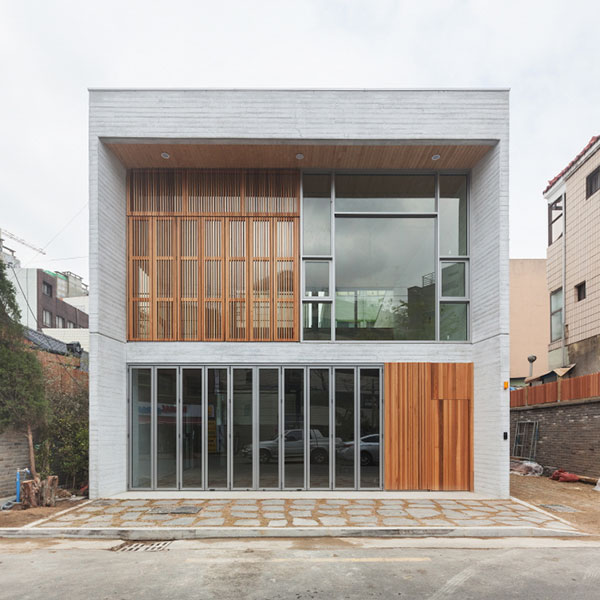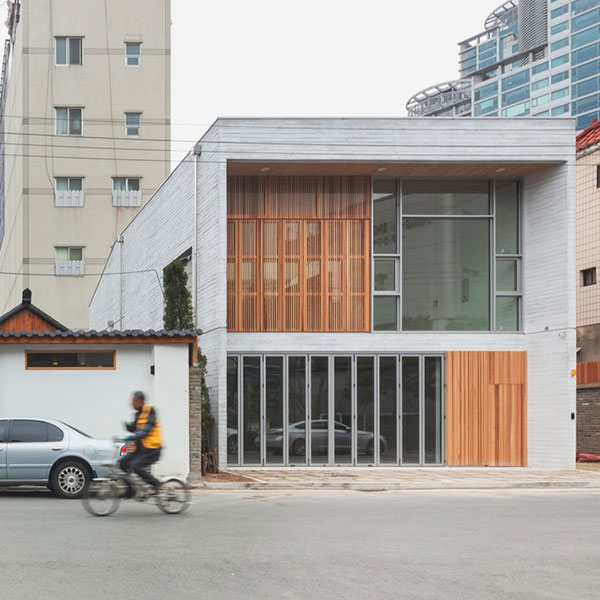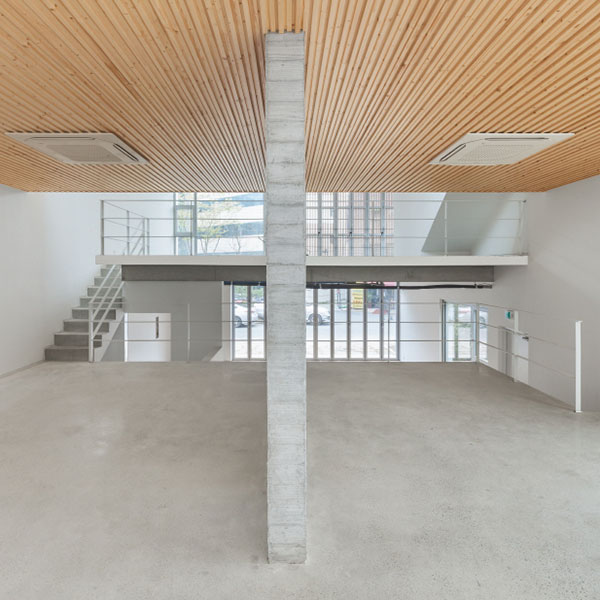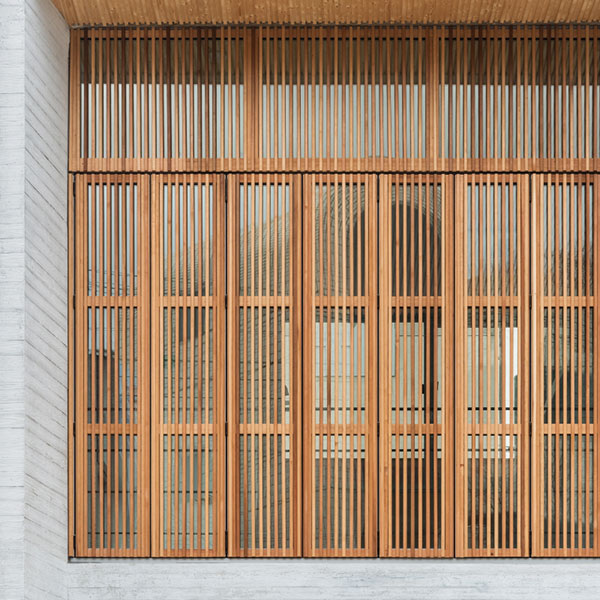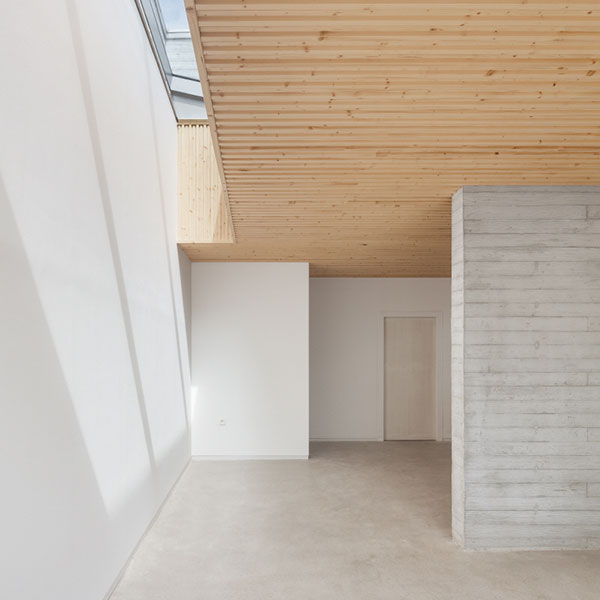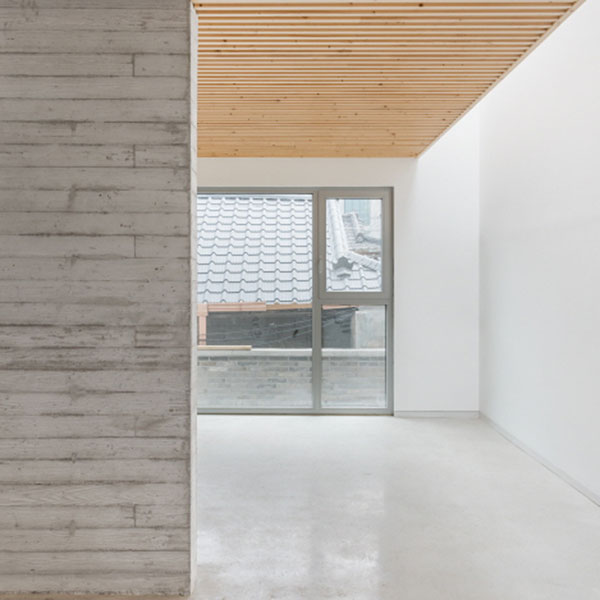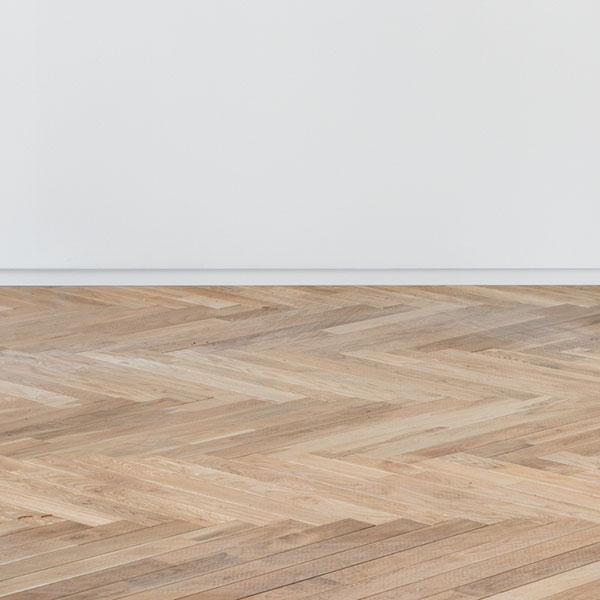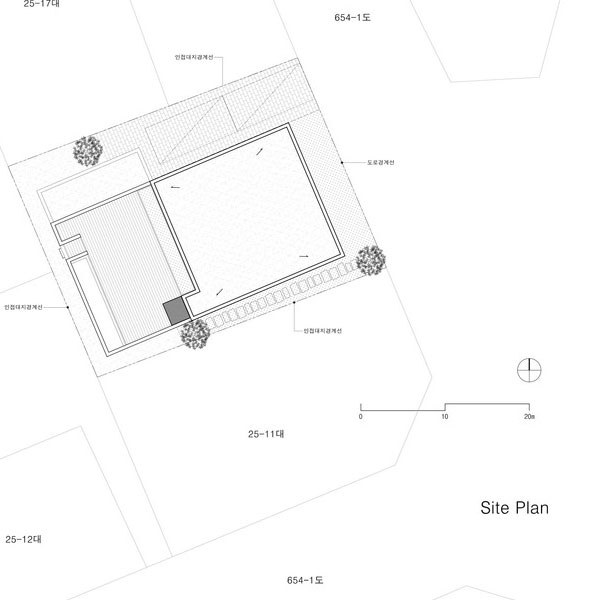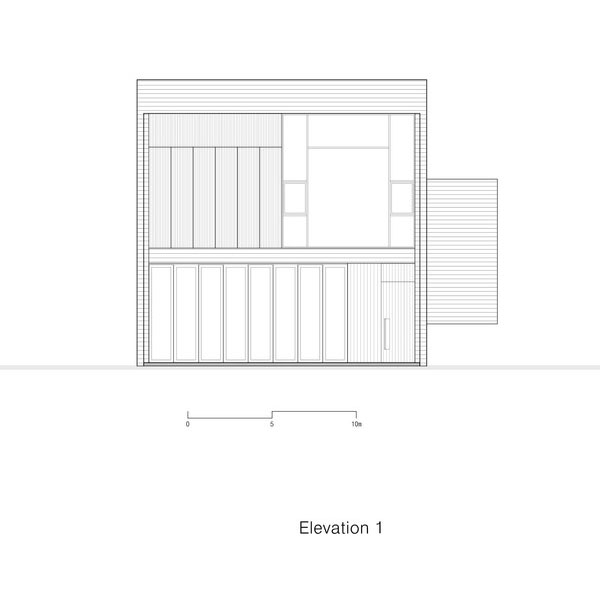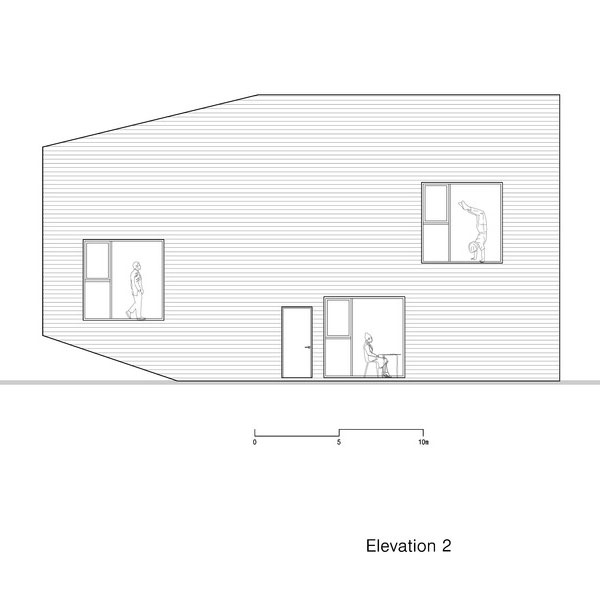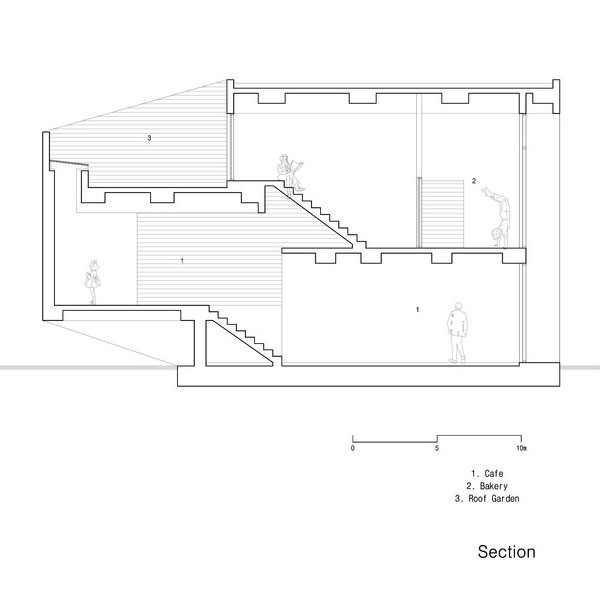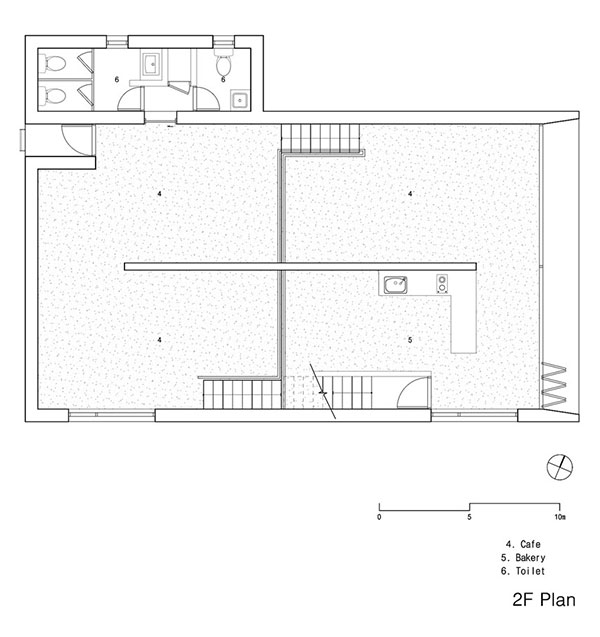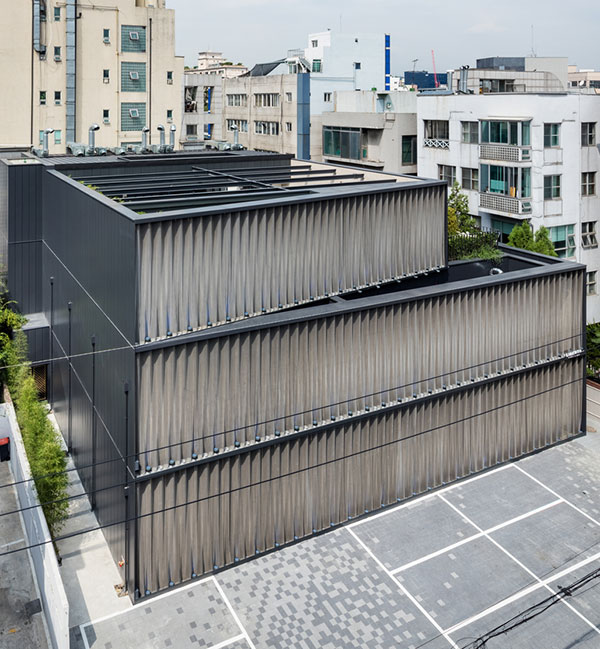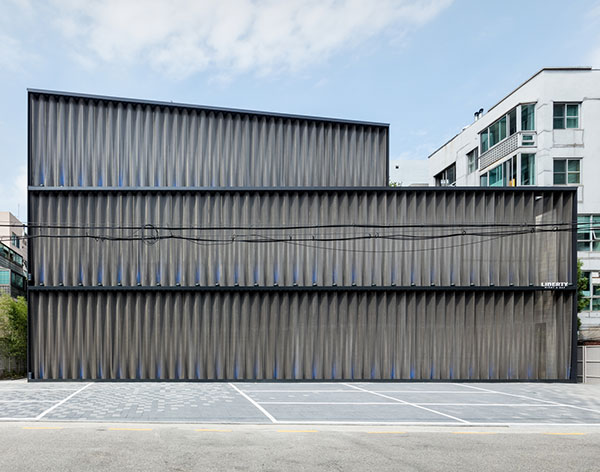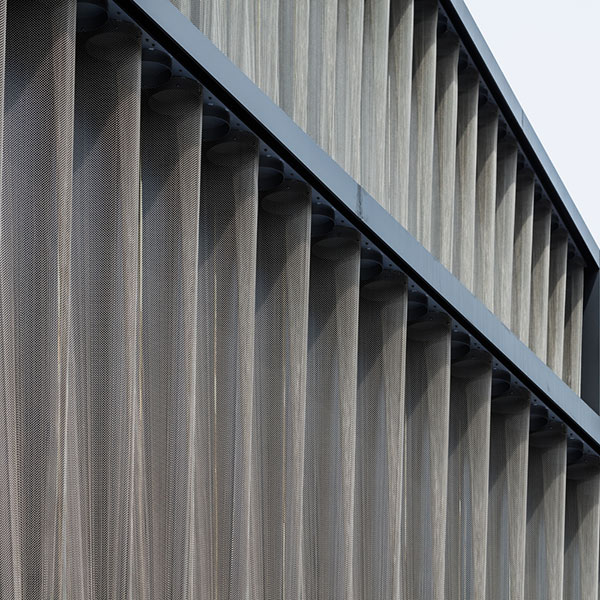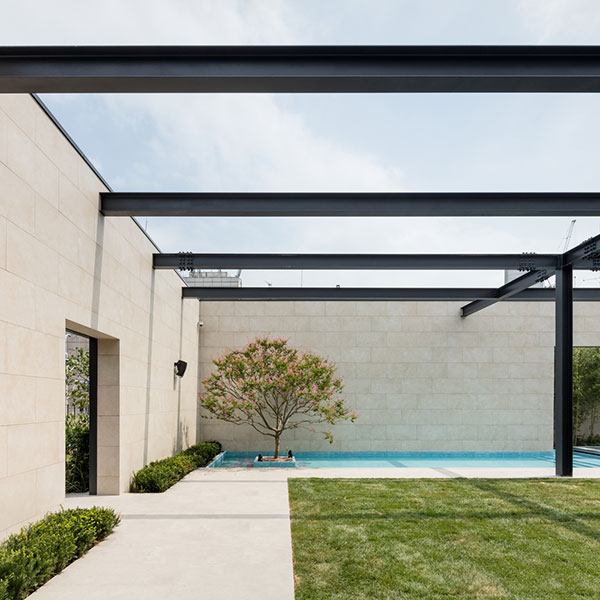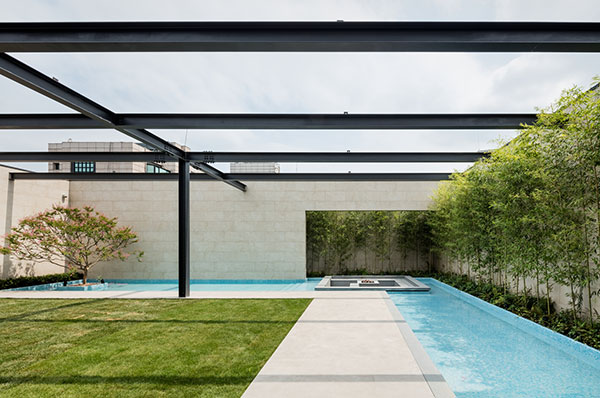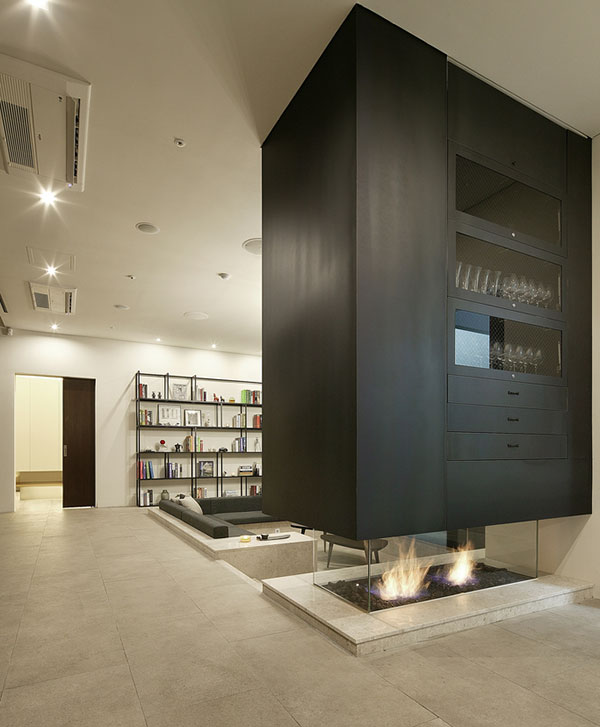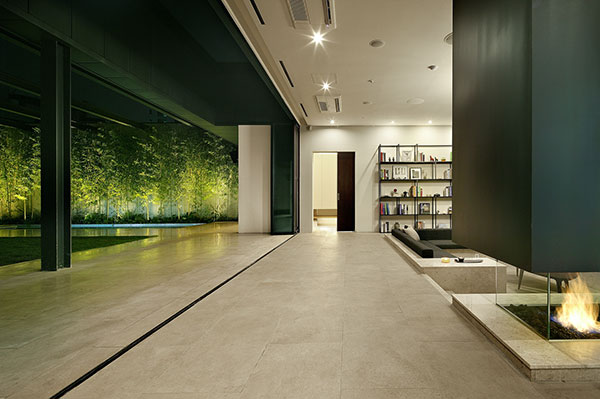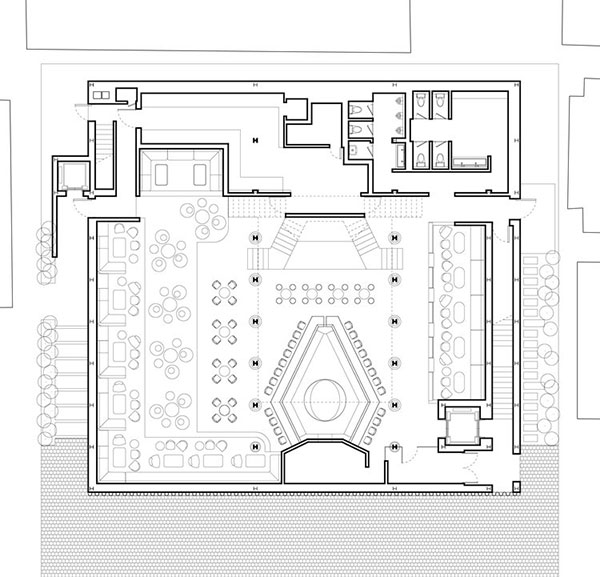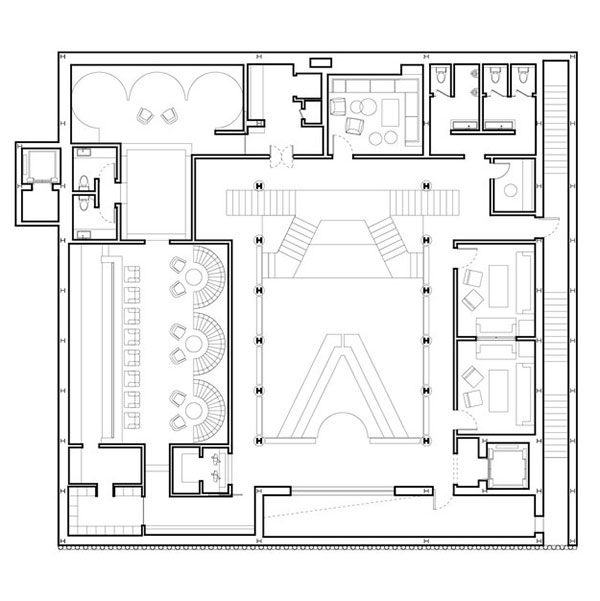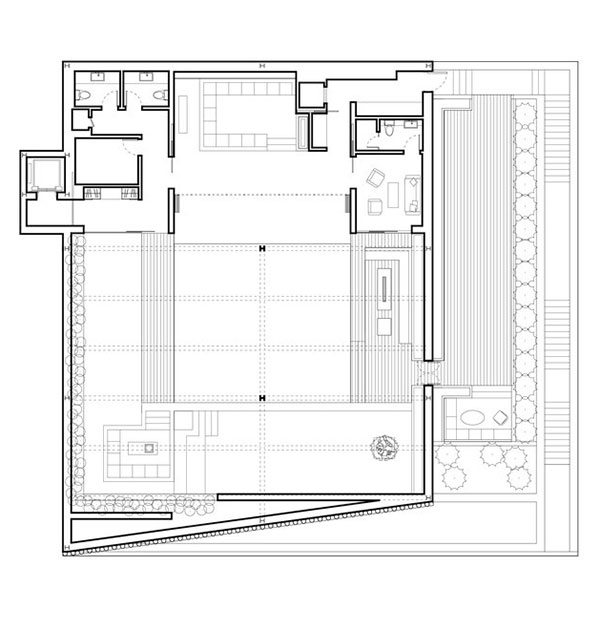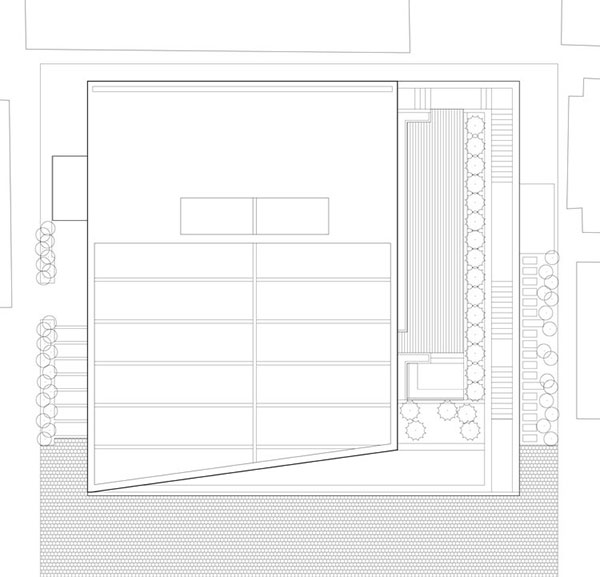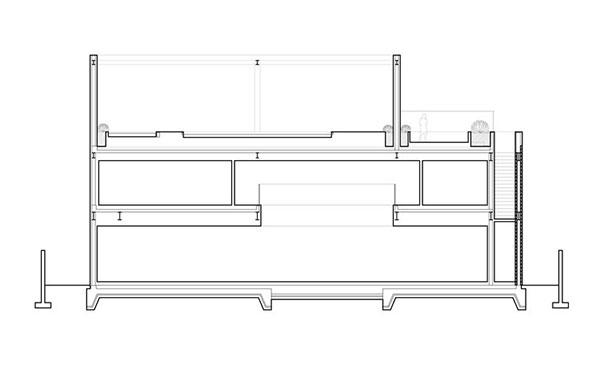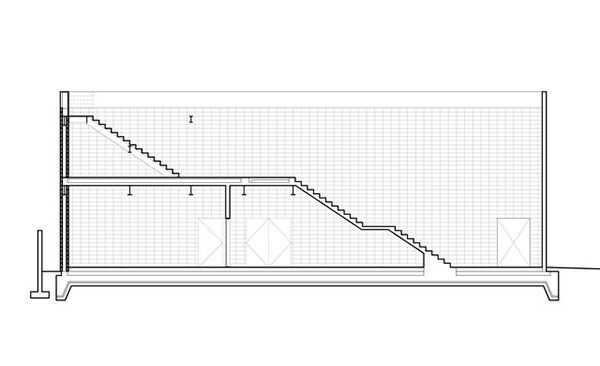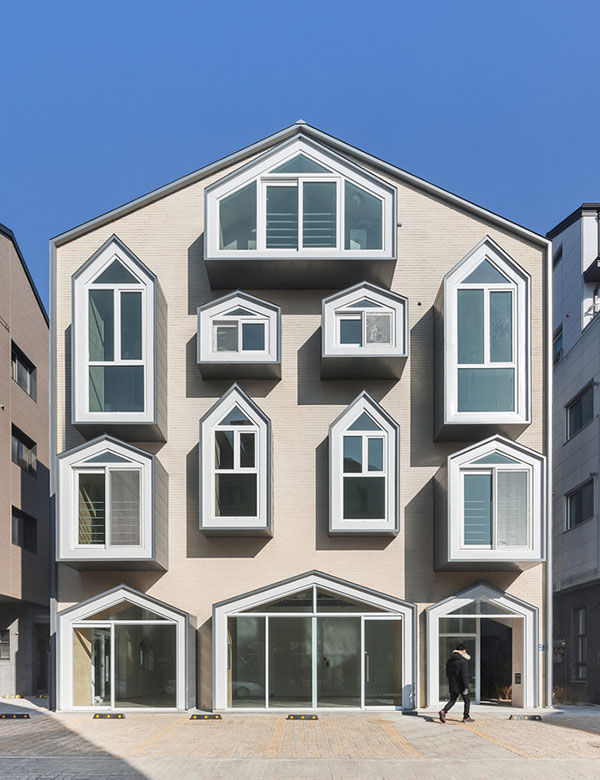
The mixed-use housing blocks that once were empty in Gwanggyo New Town are now densely filled with new buildings.
Due to the descriptively written local codes and the economic desires of the owners that is to maximize rentable square meter, most of the buildings in the area have structurally similar designs.
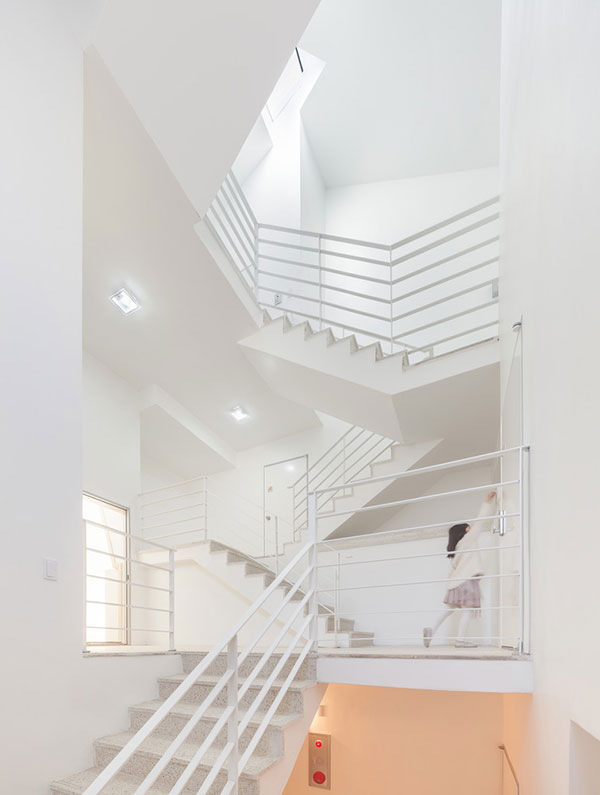
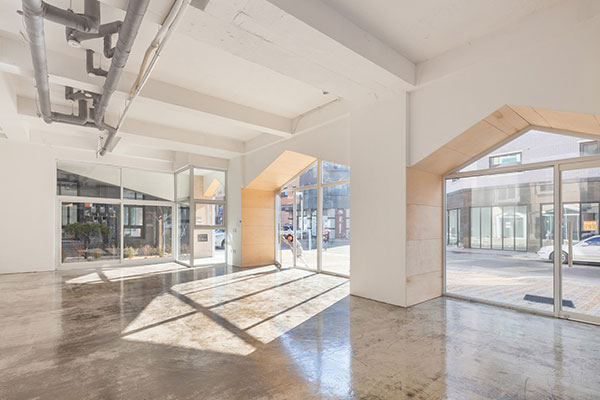
Instead of following the “architectural formula” of the area, with the Gablepack AND (Architecture of Novel Differentiation) proposes five residential units that are all similar in size – 66 sqm. Therefore, all the units can have two reasonable size bedrooms and a living room. It reflects the rental demand of the area, as most of the tenants in the area are families, usually a couple with a child. It creates a better return for the owner.
In order to do this, the architects had to invent a three dimensional puzzle like composition. Because once they place the core space, each floor is left with only 100 sqm. As a result, Gablepack has three double story units, and two double height units.
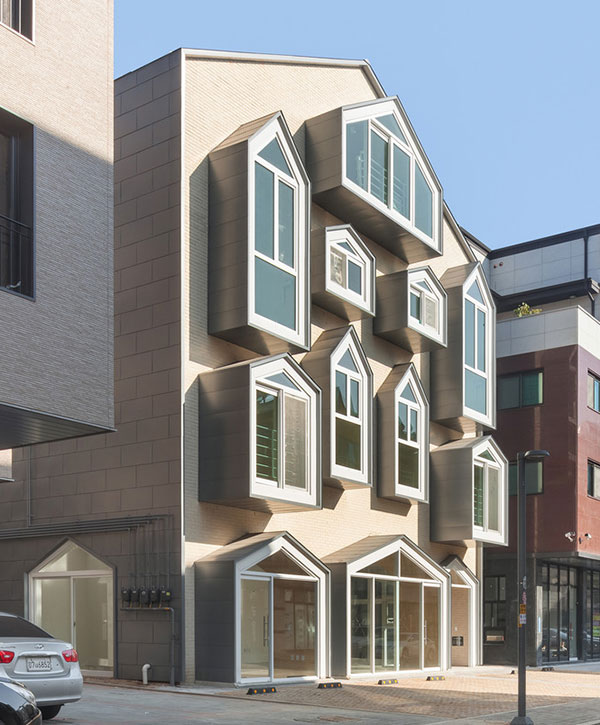
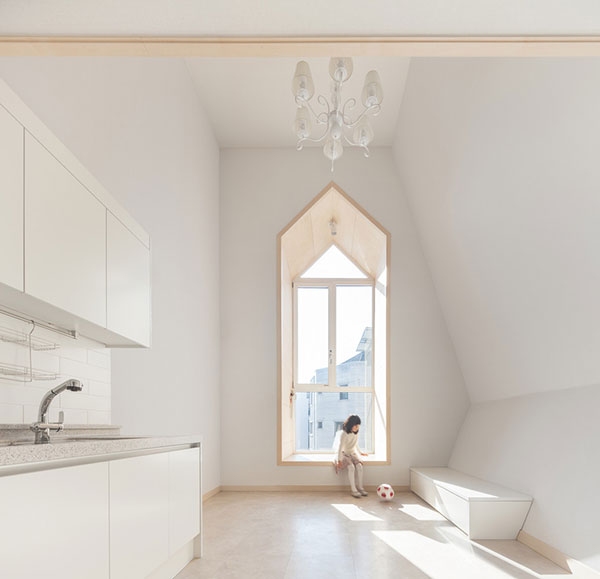
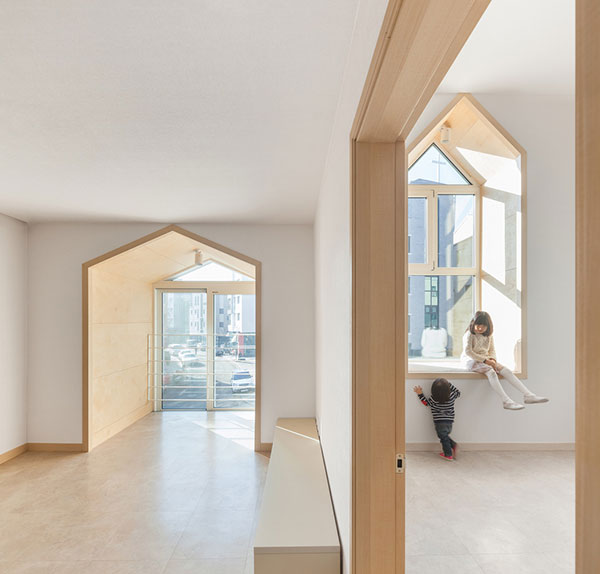
From the architect. The New Town Formula -
It all happened only within last few years. The mixed-use housing blocks that once were empty in Gwanggyo New Town are now densely filled with new buildings. Due to the descriptively written local codes and the economic desires of the owners that is to maximize rentable square meter, most of the buildings in the area have structurally similar designs. The typical design offers 6 parking spaces in the front of the building with the first floor dedicated for a store. Two small residential units are placed on both of the2nd and 3rd floor, and one large residence on the top floor. The local code requires the first floor store to have 50% or more transparent walls. Furthermore, 70% or more of the roof should be gabled, and the slope of the gable must be between 1:1 and 1:3 (height: distance). As a result of this specific “architectural formula,” formally similar buildings with different exterior and interior finishes create this unique urban context of the site.
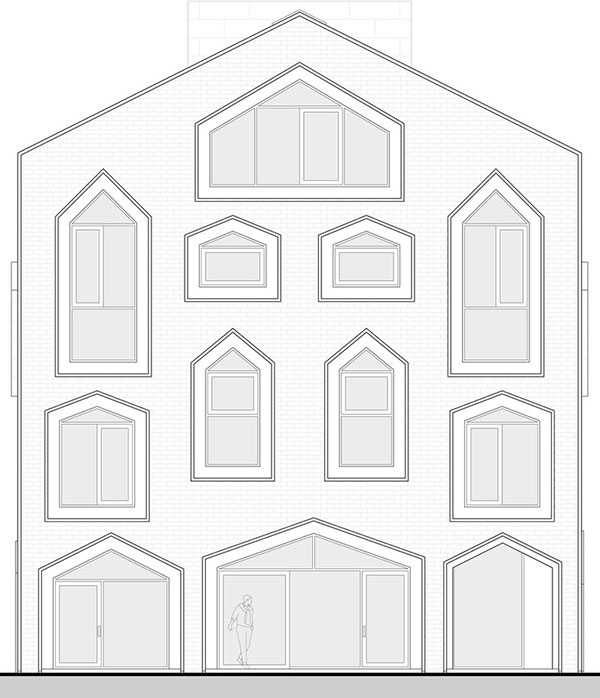
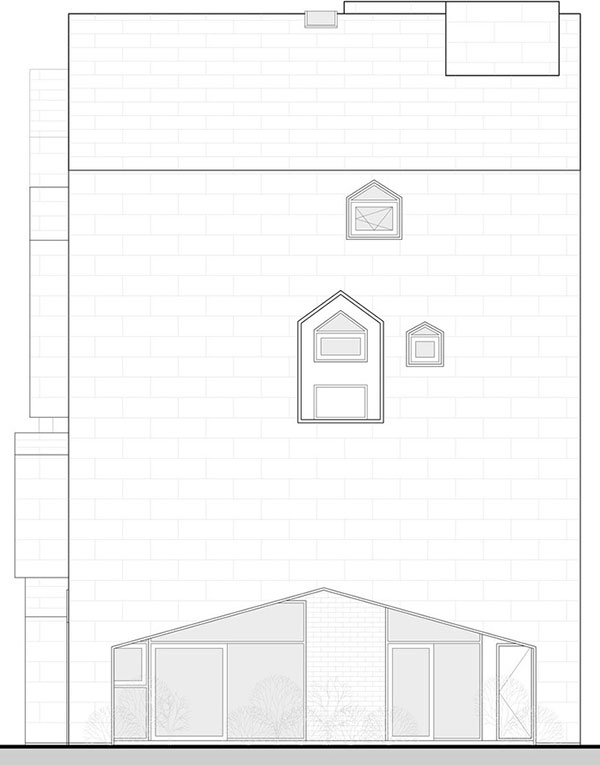
A Four story building, but like a five story building -
Instead of following the “architectural formula” of the area, the Gablepack proposes 5 residential units that are all similar in size – 66m². Therefore, all the units can have 2 reasonable size bedrooms and a living room. It reflects the rental demand of the area, as most of the tenants in the area are families, usually a couple with a child. It creates a better return for the owner. In order to do this, we had to invent a three dimensional puzzle like composition. Because once we place the core space, each floor is left with only 100m². As a result, Gablepack has 3 double story units, and 2 double height units, and this 4 story building has received suspicious glances as if it is a 5 story building.
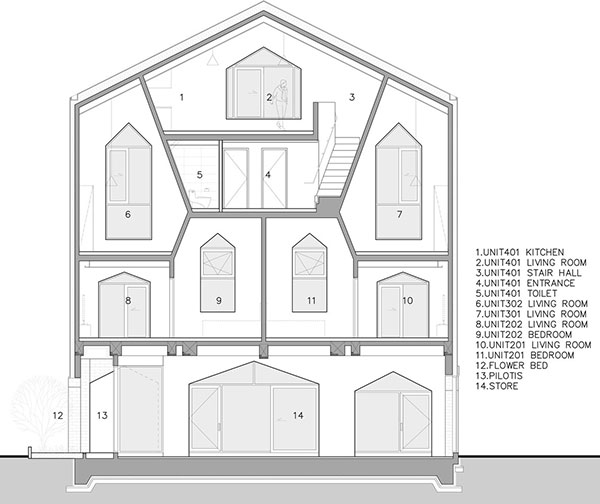
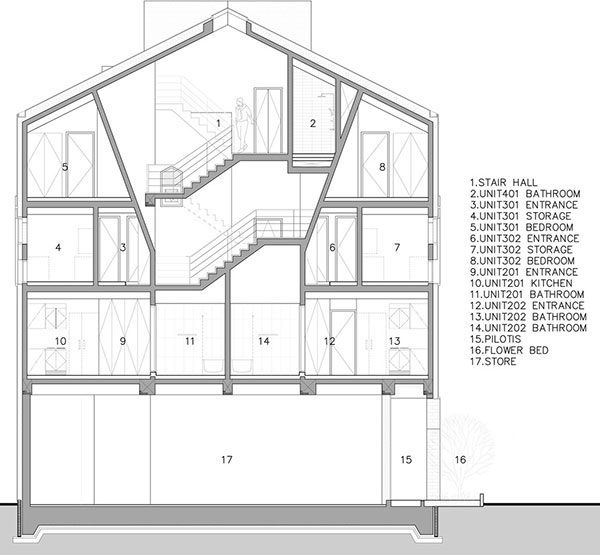
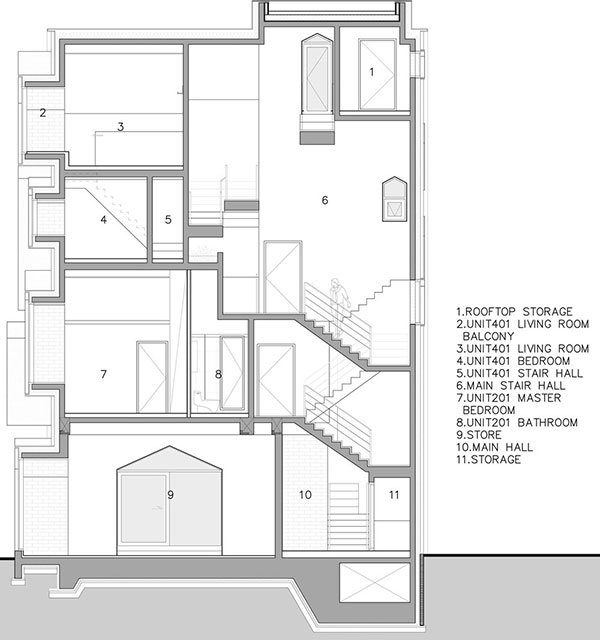
Small Gables in a Big Gable -
Instead of only applying a gable roof shape in the exterior, we decided to actively use the gable form to improve the interior space. We applied the gable form in the living spaces of the units, in the balconies, and on the windows. Thus, all the units have spacious floor to ceiling height and the balconies with an open view. The 2nd floor units have attics, and 3rd and 4th floor units are double story units. It is to compensate the small square meters with spacious cubic meters. The protruded balconies and the windows are all different in sizes, responding to the different characters of the units. The store space on the first floor can be divided into two stores, and the gabled entrance of the building follows the overall concept of the design.
The Gablepack, Kyeonggi-do, Korea
Program: apartment building
Architects: AND (Architecture of Novel Differentiation)
Project Manager: Yeonji Kim
Structural Consultant: THE Structural Engineering Co.
Area: 145 sqm
Completion: 2015
Photographs : Kyungsub Shin
Architecture of Novel Differentiation

